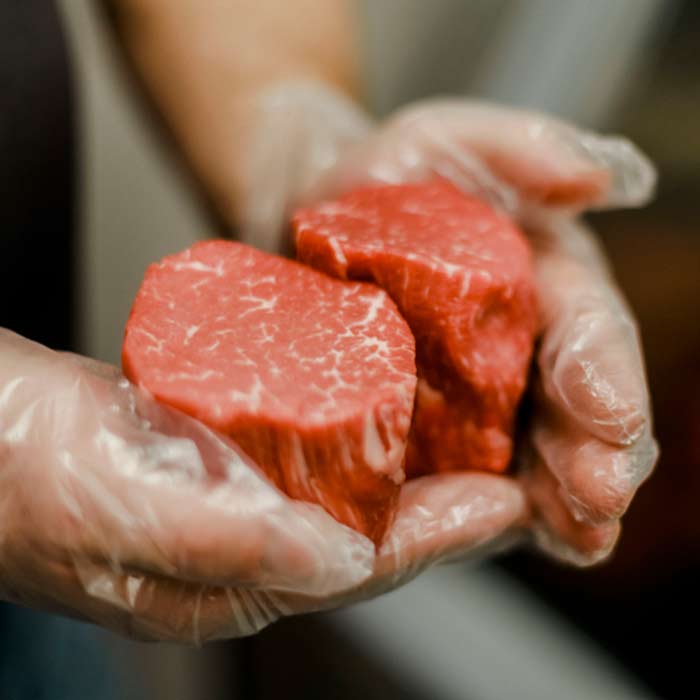Bagley Farms Meat Market Edwardsville IL: Your Trusted Source for High-Quality Meats
Bagley Farms Meat Market Edwardsville IL: Your Trusted Source for High-Quality Meats
Blog Article
Reveal the Art of the Butcher's Cut in a Modern Meat Market
In the ever-evolving landscape of contemporary meat markets, the butcher's cut has transcended its standard roots, combining old-time workmanship with modern techniques. What absolutely establishes the modern butcher apart is their capacity to forge a much deeper link between consumers and the beginnings of their meat.
Development of Butchery Strategies
The development of butchery methods reflects a rich tapestry of technology and adaptation driven by improvements in modern technology, modifications in customer demand, and a much deeper understanding of meat science. Historically, butchery was a craft gave with generations, with approaches sharpened over centuries to maximize return and taste. Nevertheless, the commercial transformation introduced mechanization, transforming typical methods and making it possible for massive handling.
The mid-20th century saw butchery techniques further fine-tuned by clinical understandings into muscle mass biology and meat aging, boosting both tenderness and taste. Developments like vacuum cleaner product packaging and refrigeration expanded product shelf-life, permitting butchers to diversify offerings and improve quality control. This duration also marked the increase of specialized tools, such as band saws and meat slicers, which raised precision and effectiveness in meat processing.

The 21st century has actually presented digital modern technology right into the butchery realm. Digital systems now assist in monitoring animal provenance and maximizing cuts to fulfill specific consumer choices. Furthermore, a resurgence in artisanal butchery has emerged, blending standard abilities with modern understanding to satisfy consumers looking for honest and lasting meat choices. This development underscores a dynamic interplay between custom and development, meeting contemporary demands while maintaining the craft's heritage.
Recognizing Meat Cuts
Comprehending the intricacies of meat cuts is necessary for both butchers and consumers looking for top quality and value. For butchers, precise cuts show skill and respect for the craft, ensuring very little waste and optimal return.

Understanding muscle mass make-up is vital; muscle mass used more regularly by the animal have a tendency to be tougher and are best suited for sluggish food preparation approaches, while less-used muscle mass, like those found in the loin, are more tender and perfect for cooking or roasting. Familiarity with these differences equips consumers to make informed selections, improving their culinary ventures.
Choosing Quality Meat
Picking the ideal meat entails more than just selecting an aesthetically appealing piece from the display. bagley farms meat market edwardsville il. The art of selecting high quality meat needs a Click Here discerning eye and knowledge of particular features that symbolize quality and quality. To start with, take note of the shade; beef needs to have an intense, cherry-red color, while lamb must display a soft pink tone, and pork a light pink. This indicates the meat is fresh and hasn't been subjected to oxygen for also lengthy.
Second of all, take into consideration the marbling, which describes the white flecks of fat within the muscle. Appropriate marbling is an essential sign of inflammation and taste, as it thaws during cooking, boosting the meat's juiciness. Remember, higher marbling commonly associates with premium quality cuts, such as USDA Prime.
Texture is another critical aspect; meat needs to feel strong to the touch, not slimy or excessively soft. Additionally, bear in mind the scent. Fresh meat needs to have a clean, neutral smell, cost-free from any type of sour or off-putting smells.
Pairing Cuts With Food Preparation Techniques

Alternatively, tougher cuts like brisket and chuck roast are abundant in collagen, which breaks down into gelatin when prepared gradually. These cuts are excellent for braising or slow roasting, allowing the meat to tenderize gradually and establish deep, complex tastes. In a similar way, cuts such as brief ribs and pork shoulder prosper with slow-cooking techniques, where prolonged cooking times change their robust appearances into delicious meals.
Lamb shanks and oxtail, which require prolonged cooking to tenderize, are perfect prospects for stewing or sluggish simmering. These techniques coax out abundant, passionate flavors while preserving wetness. By recognizing the unique advice qualities of each cut, cooks and home chefs alike can boost their culinary creations, making certain each dish is both satisfying and unforgettable.
The Butcher's Role Today
Browsing the advancing landscape of the contemporary meat market, the butcher's duty today extends beyond mere preparation of cuts. Contemporary butchers are cooking artisans, educators, and supporters for sustainable techniques. They bridge the gap between the ranch and the fork learn the facts here now by ensuring honest sourcing, understanding animal husbandry, and focusing on openness in the supply chain. This change mirrors the growing consumer demand for top quality over quantity, where provenance and pet welfare are vital.
Along with crafting precise cuts, butchers currently involve directly with clients, using cooking guidance and customizing choices to suit specific needs and choices. Their competence in meat aging, marbling, and taste accounts encourages customers to make informed decisions, enhancing their culinary experiences. This customized service exhibits the butcher's progressing function as a relied on advisor in the kitchen.
Moreover, butchers are essential in decreasing waste, using whole pets to develop diverse products such as sausages and supplies. This extensive method not just respects the pet but likewise aligns with contemporary sustainability goals. This way, the modern-day butcher personifies both practice and innovation, adjusting to an ever-changing market while protecting the creativity and honesty of their craft.
Conclusion
Mastery in comprehending diverse meat cuts and quality signs encourages butchers to supply enlightened referrals, aligning certain cuts with ideal cooking approaches. By recognizing historic practices while accepting modern demands, the butcher's role stays essential in today's innovative meat market.
Report this page